
Xenoperdix udzungwensis is Udzungwa Forest-partridge, no subspecies. Specific habits are unknown.Listed on the International Union for Conservation of Nature (IUCN) 2016 Red List of Threatened Species ver 3.1 - Endangered (EN).Protect wild animals and eliminate wild meat.Maintaining ecological balan...

Ptilopachus nahani, foreign name Nahan' s Partridge is a traditional bird in the pheasant family. As its other name suggests, it was previously considered a partridge (Francolin) and placed in the genus Francolinus or Pternistis, but it was eventually determined that its closest relative was the...

The Bornean Peacock pheasant (Latin name: Polyplectron schleiermacheri) is a rare and little-known species of the genus Polyplectron. Specific habits are unknown.Due to continued habitat loss, low numbers and limited distribution, the Bornean peacock pheasant is listed as endangered by the Internati...

Polyplectron napoleonis (formerly Polyplectron emphanum), also known as the Palawan peacock pheasant, is a medium sized pheasant. Specific habits are unknown.Due to continued habitat loss, low numbers and limited distribution, as well as hunting, the Barawang peacock is classified as vulnerable by t...
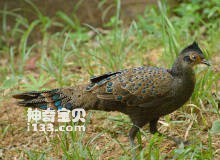
The Malay Peacock pheasant (Polyplectron malacense) is a medium sized pheasant with no subspecies.Malay peacock pheasants often live alone or in pairs, mostly on the wet ground where the forest is dense and the vegetation under the forest is more developed, and the activities are more frequent in th...
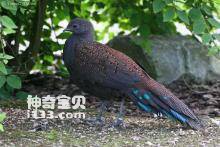
Polyplectron inopinatum, Mountain Peacock Pheasant often live alone or in pairs, mostly on the wet ground with dense forests and well-developed understory vegetation, with frequent activities in the morning and afternoon. Sex is alert and timid. Male birds are particularly cautious when they are act...
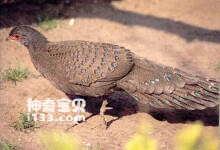
Polyplectron germaini is a medium sized pheasant. Endemic to Indochina Peninsula. The pheasant was named after the French colonial surgeon Louis Rodolphe Germain. According to mitochondrial DNA and nuclear DNA tests, it was confirmed that the eye spotted peacock pheasant belonged to the same clade a...

Polyplectron chalcurum, foreign name Bronze-tailed Peacock Pheasant, often live alone or in pairs, mostly in dense forests, underforest vegetation more developed damp ground, in the morning and afternoon activities more frequent. Sex is alert and timid. Male birds are particularly cautious when they...
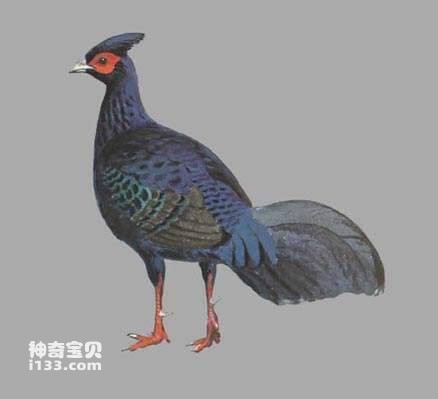
Lophura × imperialis, one of the world's rarest chickens, was discovered in the 1920s, but only a few individuals were found in Vietnam in the 1990s.Jean Theodore Delacour discovered a live specimen of a pair of golden Pheasants in 1923 and brought it to Europe. They were not discovered until 1...
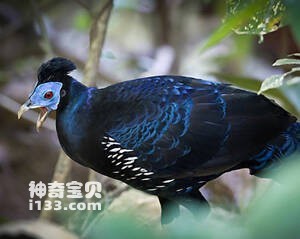
Malay Crested Fireback (Lophura rufa), a single species without subspecies differentiation. The Malay Pheasant was once a subspecies of the Pheasant, but was classified as a separate species in 2014.Malay crested pheasants are often active alone or in pairs. It is most active in the early morning or...
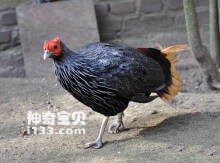
Bornean Crestless Fireback (Lophura pyronota), a single species without subspecies differentiation. It was once a subspecies of Pheasant's Pheasant, but was classified as a separate species in 2014.Bornean pheasants are often found alone or in pairs. It is most active in the early morning or eve...

Lophura inornata (Salvadori's Pheasant), usually in small groups of three to six individuals, either alone or in pairs. In winter, there are sometimes as many as 16-17 clusters. Especially in the early morning or evening the most active, poor activity at noon, night more perches in trees. Activi...

Lophura ignita is a medium pheasant measuring 70cm in length. The pheasant's pheasant mainly eats plants, fruits, and small animals. The female will lay four to eight eggs at a time, which are milky white.Due to continued habitat loss and excessive hunting, the Pheasant's pheasant has been l...
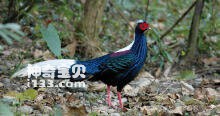
Lophura erythrophthalma, often alone or in pairs or in small groups of 3-6 individuals. In winter, there are sometimes as many as 16-17 clusters. Especially in the early morning or evening the most active, poor activity at noon, night more perches in trees. Activities often strut, act alert, run qui...

Lophura edwardsi Edwards' s Pheasant, there are 2 subspecies.Lopheus is a mysterious bird that has rarely been observed in the wild, so little has been documented about its biology and ecology, including details of its diet. Mating and nesting behaviors have not been observed in the wild, only i...

Siamese fireback (Lophura diardi) is a medium pheasant.Thai pheasants usually live alone or in small groups of three to six individuals. In winter, there are sometimes as many as 16-17 clusters. Especially in the early morning or evening the most active, poor activity at noon, night more perches in...
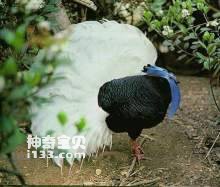
Lophura bulweri, also known as Bulwer's Pheasant, is a pheasant native to Borneo Island.A small flock of three to six individuals, usually alone or in pairs. In winter, there are sometimes as many as 16-17 clusters. Especially in the early morning or evening the most active, poor activity at noo...
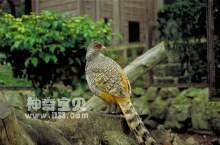
The painted Pheasant (Catreus wallichii), the foreign name Cheer Pheasant, like most pheasant birds, does not have a bright rich color.Most pheasants use their powerful beaks to dig the ground for food, including plant roots, tubers or bulbs, seeds, grubs, beetles, snails, insect larvae and worms, a...